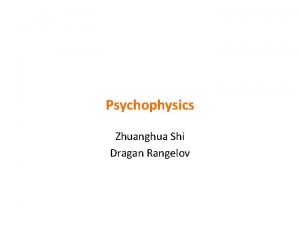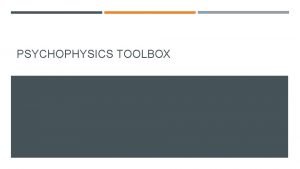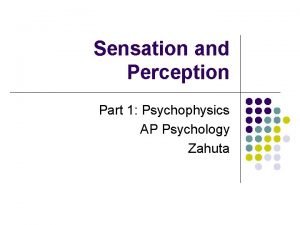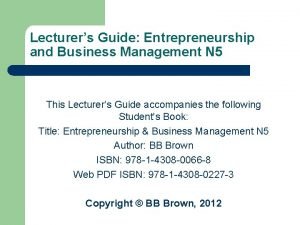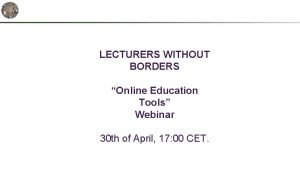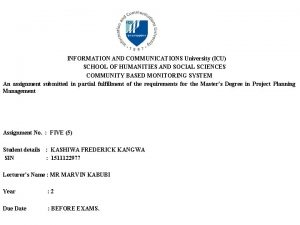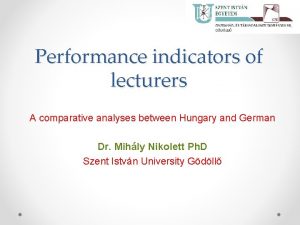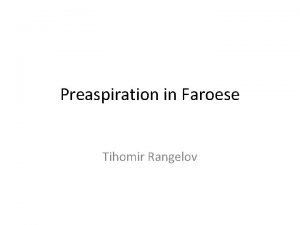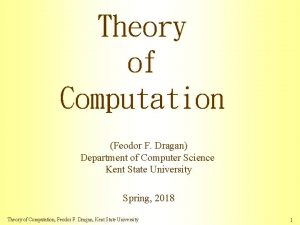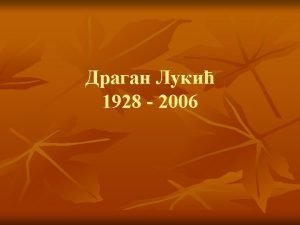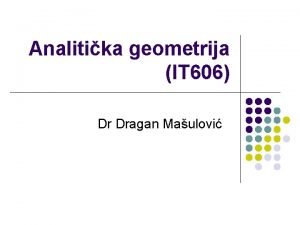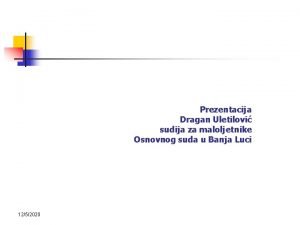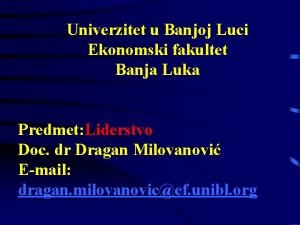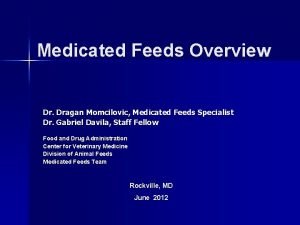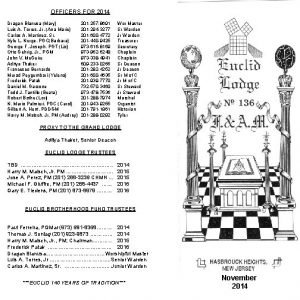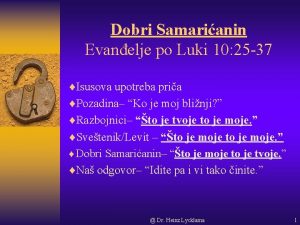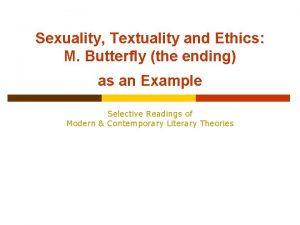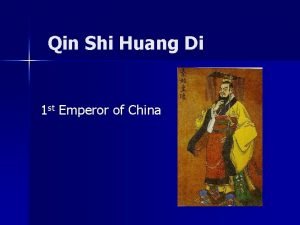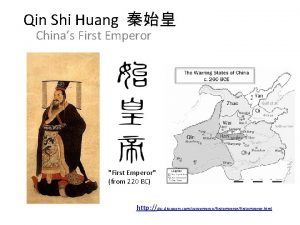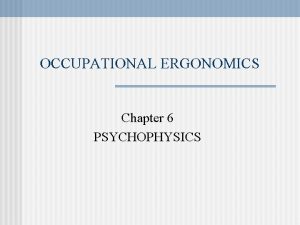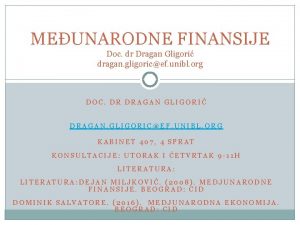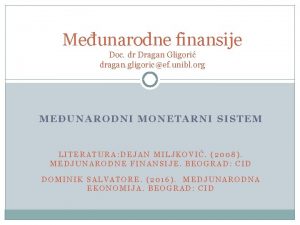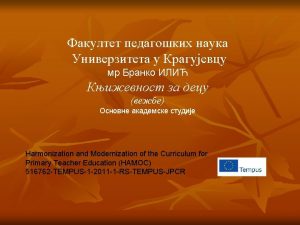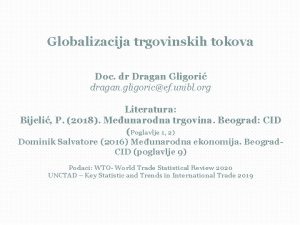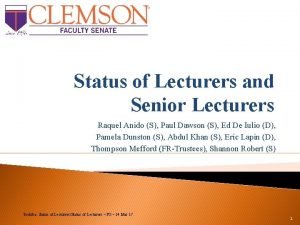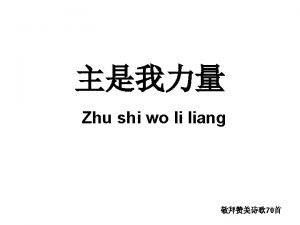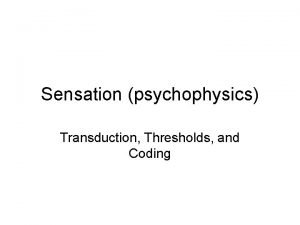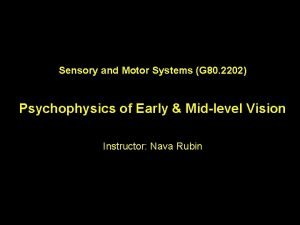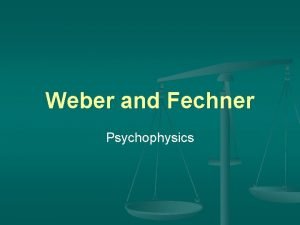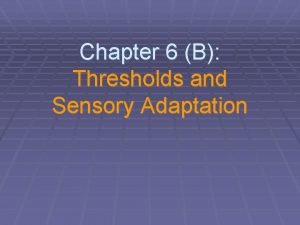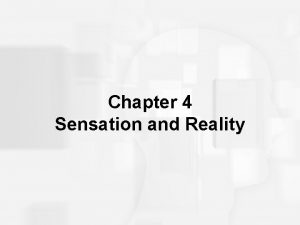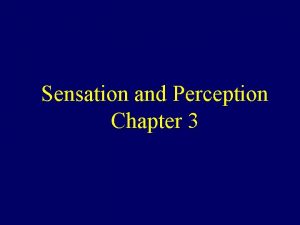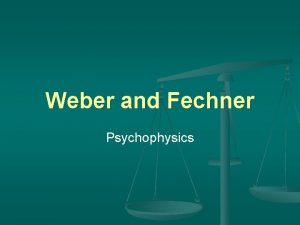Psychophysics Zhuanghua Shi Dragan Rangelov Course lecturers and





















- Slides: 21

Psychophysics Zhuanghua Shi Dragan Rangelov

Course lecturers and tutors

Perception White and Gold Black and Blue and Brown Switching 9% 9% 28% 53%

Reality ≠ Perception = f( ) 4

Psychophysics = f( ) • behavior: RT, accuracy • stimulus inputs Behavior = f(stimulus inputs)

Why a course on psychophysical methods ?

Why a course on psychophysical methods Experience • Introspection • Observation Cognitive architecture Neural mechanisms • RT/errors • Thresholds • … • • f. MRI EEG TMS …

Why a course on psychophysical methods • Complexity of neuro-cognitive phenomena requires their analysis on different levels • Levels are characterized by different methodological and research approaches • Analysis of behavioral measures helps interpretation of neuroimaging results

Describing and opening the black box • Psychophysics Stimulus • Cognitive neuroscience Stimulus Imaging f(S, O) Behavior • Describing what functions the cognitive system performs Behavior • Describing how and where are these functions implemented

Tilt illusion • Erroneous perception of the tilt of the inner grating as a function of contextual stimulation

Psychophysics of the tilt illusion Schwartz et al. , 2007, Nat. Rev. Neur

Neuroscience of the tilt illusion • Electrophysiological measure • responses of populations of neurons to local orientation stimuli Repulsive tuning shifts in primary visual cortex neurons for space and time, for context target differences of 15°

Bringing together behavior and neurons • From recordings of neurons (left) behavior can reliably be predicted (right-hand side)

Aims of the course • Overview of “classical” psychophysical methods • with reference to their applications in current neuro-cognitive psychology research. • Demonstrate purely “psychological” tools for investigating internal states and processes • Hands-on experience.

Schedule Strongway, Dragan Lecture, Mon, 14 – 16: 00, Leo 1208 19. 10. 15 Intro + SDT I 20. 15 Efsun, Leo Tutorial G 1, Tue, 14 – 16: 00, Leo 1202 Article distribution Introduction/Tutor presentations/Student assignments Student Presentations Markus Tutorial G 2, Wed, 14 – 16: 00, Leo 1206 21. 10. 15 Article distribution 28. 10. 15 TUE: Seminar with Efsun/Leo (Tutor Presentations) 04. 11. 15 Introduction 11. 15 Experiment Design 18. 11. 15 Methods & Lab Tour 26. 10. 15 Adpative Methods 1 27. 10. 15 02. 11. 15 Adaptative Methods 2 03. 11. 15 09. 11. 15 RT I 10. 11. 15 16. 11. 15 RT II 17. 11. 15 23. 11. 15 RT III 24. 11. 15 Data collection/office hours 25. 11. 15 Data Collection 30. 11. 15 RT IV 01. 12. 15 Data collection/office hours 02. 15 Data Collection 07. 12. 15 08. 12. 15 Data Analysis (SPSS + R) 09. 12. 15 Analysis I 14. 12. 15 EXAM 15. 12. 15 Data interpretation + Discussion 16. 12. 15 Analysis II & Discussion 21. 12. 15 22. 15 11. 01. 16 12. 01. 16 20. 01. 16 Experiment instruction Week / Lab tour (2 groups) Designing the experiment No regular class: Slot reserved for preparation of conference presentation Final Discussion, Presentation practice, & Report writing NCP conference + Tijuana (all)

Practical work • Teaser papers available tomorrow • Two groups: 1. Looking • Visual search and memory learning 2. Touching • Tactile contextual learning • Main goal – practical application of the methods covered in the lectures

Structure of the course • Requirements for course credit points (5 CP) • Active participation in lectures and tutorials • Presentation of the projects’ results • Exam • Written report

Criteria for the evaluation of the students’ presentation • • • Theoretical importance of the research Research question Paradigm and data collection Appropriateness of data analyses Well illustrated by examples and figures Timing of the talk: • 20 minutes • good allocation of time for different parts

Criteria for written report • 6 – 8. 000 words long • Structure • • • Abstract Introduction Methods/Results Discussion References – consistently formatted (APA) • Written report will be graded by several reviewers

Course materials • Lecture slides • http: //www. psy. lmu. de/exp/people/ma/rangelov /teaching • Research projects related materials provided by the tutors

QUESTIONS?
 Suzana rangelov
Suzana rangelov Psychophysics toolbox
Psychophysics toolbox Psychophysics ap psychology
Psychophysics ap psychology Future managers lecturers guide
Future managers lecturers guide Lecturers without borders
Lecturers without borders Information and communications university
Information and communications university Raquel anido
Raquel anido Tihomir rangelov
Tihomir rangelov Feodor dragan
Feodor dragan Monash school of public health and preventive medicine
Monash school of public health and preventive medicine Mali grof u tramvaju pesma
Mali grof u tramvaju pesma Dragan masulovic
Dragan masulovic Dragan uletilovic sudija
Dragan uletilovic sudija Dragan milovanovic
Dragan milovanovic Dragan momcilovic
Dragan momcilovic Dragan blanusa
Dragan blanusa Dragan djordjevic vodovod
Dragan djordjevic vodovod Dragan prole
Dragan prole Course number and title
Course number and title Ethicsm
Ethicsm Qin shi huang quotes
Qin shi huang quotes Qin shi huang ror
Qin shi huang ror
